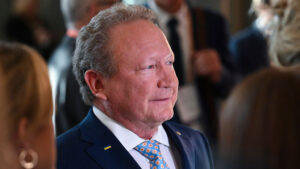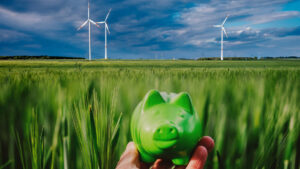ASX Renewable Energy Stocks: FMG locks in major zero emission haul truck deal

The green mining haul trucks will be integrated with zero emission power system technologies. Pic: John W Banagan/ Stone/ Getty Images
- FMG partners with Liebherr to supply green mining haul trucks, integrated with zero emission power
- The agreement advances the decarbonisation of Fortescue’s mobile fleet
- Anthony Albanese officially commits to more ambitious climate targets
Twiggy Forrest’s Fortescue Metals Group (ASX:FMG) has landed a partnership with multinational equipment manufacturer Liebherr for the development and supply of green mining haul trucks in a move to decarbonise the company’s diesel mining fleet before 2030.
These green mining haul trucks will be integrated with zero emission power system technologies being developed by FMG’s green arm Fortescue Future Industries (FFI) and Williams Advanced Engineering (WAE) – an offshoot of the Williams F1 team which FFI acquired back in February.
Utilising WAE’s unique proprietary technology and expertise in high-performance battery systems, FMG says the partnership secures a pathway for the company to become a zero emission power system supplier to a tier one original equipment manufacturer and accelerates technology commercialisation.
Truck haulage consumed approximately 200 million litres of diesel in FY21 and accounted for 26 per cent of Fortescue’s Scope 1 emissions.
Fortescue plans to purchase a fleet of 120 haul trucks from Liebherr, with delivery aligned to its fleet replacement and sustaining capital expenditure forecast.
The first of the zero emission haul units will be fully operational within Fortescue mine sites by 2025, with the further aim of having the units available for commercial sale from that time.
One step closer to being first globally ‘green’ industry
Fortescue chairman and founder Dr Andrew Forrest said FMG is on a march to achieve net zero by 2030 by strengthening the economics of its business and making products acceptable to a zero-pollution future.
“Every day our Fortescue and FFI family take forward the technology, hard work, and willpower of going green, the world mining industry takes one step closer to being the first globally leading industry to go fully green.
“I hope today’s announcement would also bring a smile to the face of Sir Frank Williams, the visionary that founded Williams F1 and Williams Advanced Engineering. Frank lived to challenge the status quo.”
The company also has broader plans to achieve net zero scope-3 emissions by 2040 across its global value chain including crude steel manufacturing, which accounts for 98% of scope-3 emissions.
Kiland (ASX:KIL)
KIL, formerly Kangaroo Island Plantation Timbers, intends to convert 4.5 million tonnes of fire-damaged biomass (standing timber) into 900,000 tonnes of biochar via pyrolysis, a process of burning biomass in a low oxygen environment.
The company’s project partners have undertaken preliminary trials of this ‘in-field’ process and Kiland intends to undertake a larger scale trial in the coming six months to confirm anticipated biochar from biomass yields.
If proven through the trial process, this ‘in-field’ technology is expected to be capable of converting plantation biomass impacted by fire and of no value into a product which may have material value.
There is no guarantee the trial process will be successful; however, if it is, the company plans to begin full scale biochar production within the next 12 months.
“Kiland expects to produce approximately 900,000 tonnes of biochar over a period of 6–10 years,” the company said this morning in a market announcement.
Biochar is a stable form of carbon made from biomass that can endure in soil for hundreds to thousands of years – it is considered a permanent store, making it an ideal technology for scalable carbon removal.
The board believes biochar production may offer Kiland a significant opportunity for monetisation via potential production of around 1.8 million Carbon Removal Certificates.
It is expected to be the world’s largest, new biochar project with anticipated carbon removal equivalent to the annual emissions from 390,000 conventional automobiles.
And… Australia officially commits to more ambitious climate targets
Australia’s Prime Minister has stuck to his guns on climate after signing an updated version of the country’s nationally determined contribution to the UN framework on climate change on Thursday morning.
As reported in The Australian, Anthony Albanese has written to the United Nations to outline the new target of 43 per cent on 2005 levels by 2030.
This is higher than the heavily criticised 26 to 28 per cent target proposed by the previous Liberal government.
“What we didn’t do was set a target and then work out how to get there. What we did was work out what good policy looked like, and it happened to come out with a 43 per cent target by 2030,” he told reporters in Canberra on Thursday.
Related Topics
UNLOCK INSIGHTS
Discover the untold stories of emerging ASX stocks.
Daily news and expert analysis, it's free to subscribe.
By proceeding, you confirm you understand that we handle personal information in accordance with our Privacy Policy.








